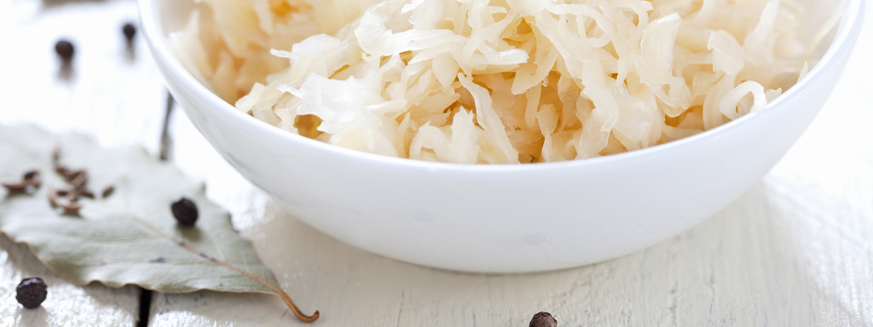The Fresh Blog
Lifestyle, Health, Nutrition & Inspiration from Luvo
Sauerkraut is a Superfood
Fermented food is big right now. Need proof? Go to a farmers market near you and you’ll see all kinds of homemade jarred options. We’ve tackled the topic ourselves, including this take on making your own Kombucha, a fermented drink made with sweetened tea. If you’re open to experimenting with home-fermented foods, experts and amateurs agree that the best place to start is with sauerkraut. Why? Well, it tastes great, it’s easy to prepare, and, best of all, it’s a superfood.
Let’s be clear, the term “superfood” is a marketing invention. It’s not a real category or designation that doctors or dieticians typically use to propose foods that will make us healthier—in fact, some medical professionals discourage use of the term. But that doesn’t mean we can’t apply it to foods that are proven to be excellent sources of important vitamins and minerals, and are just generally great. And by that criteria sauerkraut qualifies, in spades.
What it’s good for?
Sauerkraut is a source of vitamins K, B and C. It’s low in calories and provides minerals including calcium and magnesium. It’s also a source of potassium, folate, iron, dietary fiber and manganese. Uncooked sauerkraut is lacto-fermented. The “lacto” part refers to a specific type of bacteria—it has nothing to do with milk—which contain beneficial microbes and enzymes, as well as probiotics that aid digestion and strengthen the defenses of the digestive tract. Keep in mind that sauerkraut is really high in sodium—it’s basically made from rubbing salt on cabbage, so that shouldn’t be a surprise—so if you’re watching your salt intake, go easy on the stuff.
How do you make it?
It’s not hard. Here’s my favorite simple recipe to start you off. All you need is cabbage, salt and a jar to store it in. I like using one litre jars with airtight swing-top lids, and making smallish batches from a quarter- or half-head of cabbage. Basically you just chop up the cabbage into thin ribbons, massage in some salt and leave it on the counter for a few days. But read the recipe for specifics.
What do you do with it?
Whatever you want! But I suggest eating it. But seriously, folks, it’s great as a side sampler with almost any meal, from poached eggs to tuna sandwiches to green salad. It adds a tasty, salty crunch to anything edible. Sauerkraut has been a hot dog topping staple for centuries, and it goes great on burgers too. It’s versatile—the ideal complement. Just another reason why sauerkraut is so super.
Had success making your own sauerkraut? Give us some tips in the comments section and on Twitter at @luvoinc.


